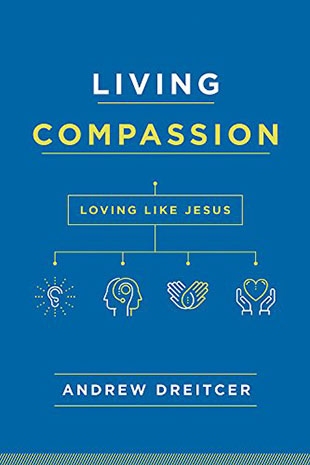"The process of being compassionate to someone you find difficult follows the same path as being compassionate to yourself. The same spiritual muscles are at work. The same spiritual exercises apply. But they are all directed toward your outer world instead of your inner world.
"At this point, having 'Taken Your Pulse,' there's a good chance you'll already have a sense of being grounded in Compassion. If not, you can 'Catch Your Breath' again or engage in some other grounding exercise.
"In any case, when interior movements are no longer waving flags at you, you are ready to offer compassion to the person who triggered your reactions in the first place. And how do you do that? You use the FLAG exercise, but focus it on your 'enemy' rather than on your interior movements. Here's an example of how that might work for me in relation to the colleague who seemed to be my antagonist:
"In my imagination, I turn my attention toward this man.
* I ask myself what this person would look like if he were a small child in pain or other distress.
* Now the image of a small child comes to me: a three-year-old boy hiding under a table.
* I strike up a conversation with him using FLAG questions
- What fears do you have? Or . . .
- What are you longing for? Or . . .
- What aching wounds do you carry? Or . . .
- What thwarted gifts do you have?
"The answers I receive to one or more of these questions will shape a conversation with the boy who symbolizes my antagonist. That imaginative, intimate, affective interaction will expand and deepen my natural compassion for this him.
"Invite the Presence of Compassion
* I invite the Presence of Compassion to join me with the little boy.
* Together we rest in whatever experience Compassion brings us. Perhaps this is a version of 'Catching My Breath.' In any case, what develops is a deepening sense of Compassion combined with a deepening feeling of compassion for the boy before me. Grounding in Compassion expands and iintensifies my capacity to feel compassion toward this imagined boy.
"I act with wise compassion toward the other.
* I ask the imagined boy, 'What do you need from me that will ease your pain?'
* I ask of Compassion, 'What might I offer this child who needs your compassion?'
* I receive this answer: 'I am so afraid everyone will find out I'm not as smart as I appear and that I'm a fraud.' Whether this is exactly what the man himself would say is beside the point. The point is to open me to my innate compassion. Based on this answer, I act in compassion toward the child, this symbol of my enemy:
- Whenever I am to meet with my antagonist, I will imagine him as the child who draws my compassion.
- I will take an open, affirming stance with him, rather than a defensive, prickly attitude.
"The details I have described above show a version of what happens when I engage in the Compassion Practice. In my description, you see not only the specific steps of the practice but also a look at what those steps can create in thoughts, feelings, and actions – at least in my life. What it forms in your life will probably look nothing like what it creates in mine. You will bring your own inner movements, relationship challenges, and social contexts to the practice, and that will make all the difference in how it plays out for you."
